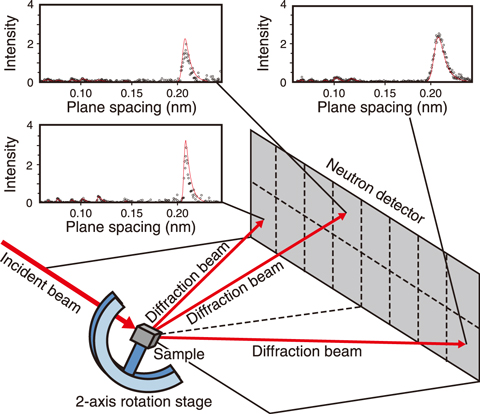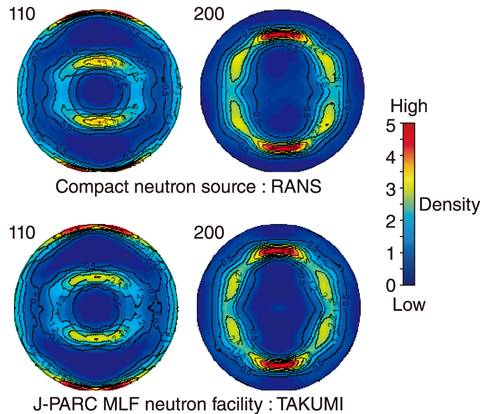
Fig.5-9 Schematic illustration of the developed texture measurement technique using the RIKEN accelerator-driven compact neutron source (RANS)

Fig.5-10 Contour plots of the distribution of crystallographic orientations (Pole figures)
Steel materials are composed of a huge number of single-crystalline grains that are usually of various crystallographic orientations. Most material processes such as rolling or heating may result in the formation of some preferred crystallographic orientation(s) in these crystal grains (i.e. a texture), which strongly affects the material’s mechanical properties, including strength and ductility. As the development of steel materials with high strength and ductility is essential to realize light-weight designs of motors and other transportation systems, a reliable method to evaluate and control the textures of steel materials is required. Crystal diffraction using high-penetrating neutrons is well-known as the most effective method to obtain a polycrystalline bulk sample of steel averaged over a large volume. However, facilities capable of providing the necessary neutron source for such a measurement have been limited to a handful of large science experimental facilities with either a nuclear research reactor or a large proton accelerator. In this work, a precise texture measurement technique suitable for various manufacturing sites was developed by collaboration between the Institute of Physical and Chemical Research (RIKEN) in Japan, with their accelerator-driven compact neutron source technique, and JAEA, with their well-established texture measurement technique using high-flux neutron diffraction.
The highly effective detection of weak diffraction neutron beams is particularly important during the neutron diffraction texture measurement using the RIKEN accelerator-driven compact neutron source (RANS). Here, an optimized distribution setup of rubber shielding plates around the RANS diffractometer had reduced background noise and enabled clear recognition of multiple diffraction peaks. A 2-axis rotation method was employed to scan all sample orientations referring to the incident neutron beam easily. The active region of the neutron detector was divided to simultaneously collect the diffraction patterns from 16 directions (Fig.5-9). This allowed for a reduction in the required number of sample rotations, thus shortening the total measurement time. Finally, the texture analysis conditions were optimized to effectively refine the weak neutron diffraction patterns. As a result, the first texture measurement of a typical steel material with a single-phase ferrite structure was successfully achieved using a compact neutron source. The pole figures obtained using the proposed method on the RANS showed good agreement with those obtained using the engineering material diffractometer TAKUMI at the MLF at J-PARC, as shown in Fig.5-10, suggesting that the high precision level of crystallographic texture obtained in 0.5 h using the neutron facility, which operates at three orders of magnitude stronger, can be realized using a compact neutron source in 5.0 hours.
The developed neutron diffraction texture measurement can be implemented at ordinary laboratories and manufacturing sites, and through the complementary collaboration with high-flux large neutron facilities, this texture technique is thus expected to further contribute to the development of innovative materials and products.
This study was part of the cooperative project with RIKEN on “Development of on-site residual stress measurement technique of bulk metals using hybrid neutron diffraction”, supported by the Japan Society for the Promotion of Science (JSPS) KAKENHI Grant-in-Aid for Scientific Research (B) (No.17H03161).
(Pingguang Xu)